Exercise intensity and blood pressure response to endurance training
 Por: R.H. Fagard. Hipertensión y Riesgo Cardiovacular, Vol. 28. Núm. 01. Enero 2011 – Febrero 2011.
Por: R.H. Fagard. Hipertensión y Riesgo Cardiovacular, Vol. 28. Núm. 01. Enero 2011 – Febrero 2011.
Weight reduction, salt restriction, moderation of alcohol intake and increased physical activity are generally accepted lifestyle measures for the prevention and management of hypertension. Several large epidemiological studies reported an inverse and independent relationship between blood pressure and physical activity or fitness, and longitudinal observational studies found that physical activity and fitness are inversely related to the later development of hypertension. However, it remains difficult to ascribe these findings to physical activity or fitness per se because of possibly interfering known or unknown confounding factors. [Actualizado: 15 de octubre 2013].
17544 visitas
33269 vista de páginas, 26159 vista de páginas únicas
4945 enlaces salientes, 4342 únicos enlaces salientes
180 acciones máximas en una visita
¿Es la hipertensión sensible a sal una enfermedad inflamatoria? Papel de los linfocitos y macrófagos
¿Es la hipertensión sensible a sal una enfermedad inflamatoria? Papel de los linfocitos y macrófagos
 Por: Rafael González-Toledo y Martha Franco. Archivos de Cardiología de México, vol. 82. Núm. 04. Octubre 2012 – Diciembre 2012.
Por: Rafael González-Toledo y Martha Franco. Archivos de Cardiología de México, vol. 82. Núm. 04. Octubre 2012 – Diciembre 2012.
La hipertensión arterial sistémica es un problema de salud pública. Esta entidad afecta al 43% de la población mexicana y es considerada una de los principales factores de riesgo para el desarrollo de eventos vasculares cerebrales, insuficiencia cardiaca e insuficiencia renal. La prevalencia de hipertensión arterial sistémica se ha incrementado durante las últimas décadas debido a la adopción de una dieta alta en sal. Existe evidencia de que la hipertensión sensible a sal se acompaña de alteraciones estructurales renales como dilatación tubular, fibrosis intersticial en parches, expresión de osteopontina e infiltrado túbulo intersticial de linfocitos y macrófagos, que impiden una excreción urinaria de sodio adecuada y en consecuencia, favorecen el desarrollo de HAS. [Actualizado: 16 de octubre de 2013].
Can we study the baroreflex mechanisms with other variables than blood pressure and heart rate?
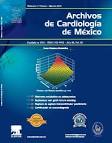 Por: Bruno Estañol. Archivos de Cardiología de México, vol. 82. núm. 02. Abril – Junio 2012.
Por: Bruno Estañol. Archivos de Cardiología de México, vol. 82. núm. 02. Abril – Junio 2012.
The baroreflex (BR) is a fundamental physiological mechanism that keeps the blood pressure (BP) stable by buffering the disturbances that arise in the system during the activities of the daily life. These disturbances alter the control system and deviate the mean BP either increasing or decreasing it. The BP is maintained tonically around a “set point” and the disturbances oscillate around it; they me be profound or relatively minor.
Sometimes the disturbances occur at predictable times such as those seen during non-Rem sleep or rhythmic breathing. The disturbances could be considered “phasic” changes that are randomly added or subtracted to the tonically maintained set point. The set point is dynamic and changes according to the mean BP maintained during a determined period of time, computed, perhaps, in hours or days or even minutes. [Actualizado: 16 de octubre 2013].
Estudios importantes sobre hipertension arterial de Cuba y el mundo
 Por: Nikos Karpettas, Efthimia Nasothimiou, Anastasios Kollias, Adriani Vazeou y George S Stergiou. Hypertension Research (2013) 36, 285–292.
Por: Nikos Karpettas, Efthimia Nasothimiou, Anastasios Kollias, Adriani Vazeou y George S Stergiou. Hypertension Research (2013) 36, 285–292.
The prevalence of elevated blood pressure in children and adolescents is more common than previously believed and often represents the early onset of essential hypertension, particularly in adolescents. The definition of hypertension in children is based on distribution criteria and normalcy tables that provide blood pressure percentiles for each measurement method (office, ambulatory and home) according to the individual’s age, gender and body size. Owing to the white coat and masked hypertension phenomena, ambulatory blood pressure monitoring is indispensable for the diagnosis of hypertension in children. Home blood pressure monitoring in children has been less well studied, and at present, treatment decisions should not be based solely on such measurements.


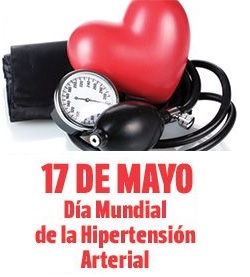
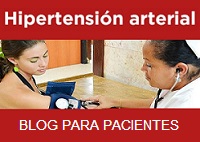


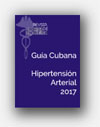
![Glosario: hipertensión [Hipertensión arterial en la atención primaria de salud. 2009]](http://temas.sld.cu/hipertension/files/2016/04/Glosario-e1541006177950.jpg)
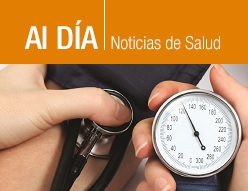
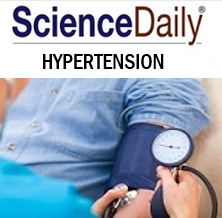

Comentarios recientes